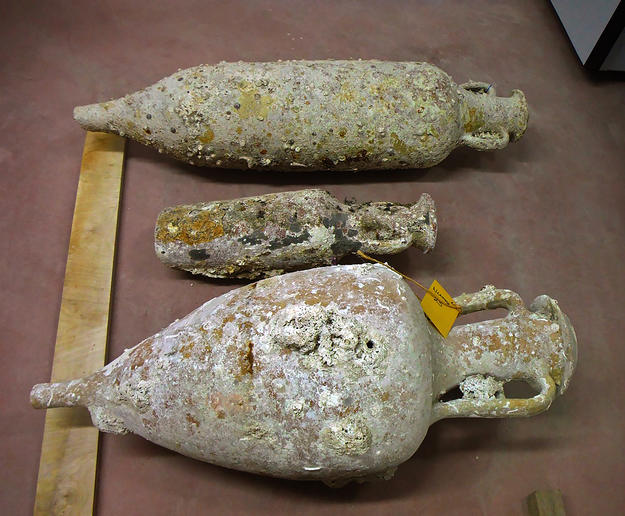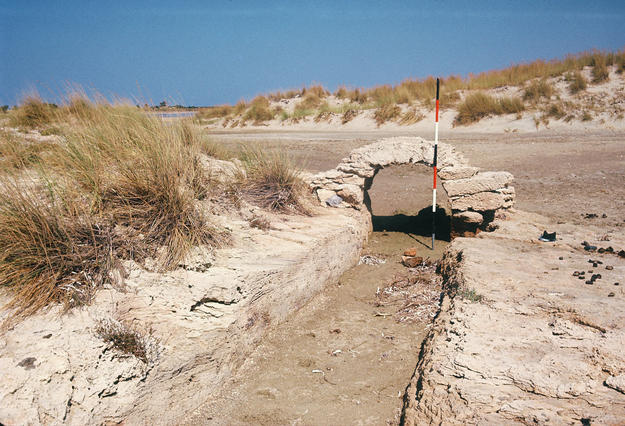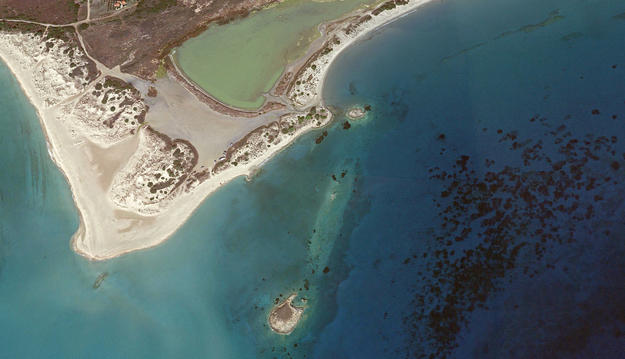Pavlopetri
2016 World Monuments Watch
A few meters below the surface of the water, next to a sandy beach on Vatika Bay in southeastern Peloponnese, lie the archaeological remains of the oldest submerged city in the world. Pavlopetri—named after a modern settlement—was a Bronze Age city that was occupied from the third millennium until 1100 B.C. The surviving archaeological remains include traces of buildings—including thresholds and lintels—and courtyards, streets, and burial places. A recent research project examined thousands of fragments of objects on the sea floor, from ordinary tableware to large Minoan jars. These discoveries provide a tantalizing glimpse into everyday life and society at Pavlopetri, thousands of years ago. But this renewed scientific interest in Pavlopetri has also helped to reveal the many threats that the site faces today.
Currently, Pavlopetri is threatened by pollution caused by large ships anchoring in Vatika Bay. Their impact takes many forms: discharge of waste, ballast water, and chemicals used to clean hulls and propellers all contribute to endanger the underwater ruins. Smaller boats travel over the archaeological remains, leading to shifting sediments that can damage the foundations and walls. Meanwhile, the site lacks physical protection and can be visited without restriction, leaving it vulnerable to looting and pilfering. Construction of a natural gas pipeline from Crete to the Peloponnese, and a power plant near Pavlopetri, is another looming threat.
In recent years, local advocates have been spurred into action and have mounted a broad campaign to protect Pavlopetri. They seek to prevent the enactment of a Special Port Regulation that would allow ships to anchor legally in Vatika Bay, and to promote the adoption of a proactive set of regulations that would protect the site instead. Buoys would surround the site, keeping ships away, while signs would explain the importance of the site to visitors. The site is included on the 2016 World Monuments Watch to support these local efforts, which have the potential to advance heritage conservation practice much more broadly by elaborating strategies for community protection of other underwater heritage sites around the world.
Watch Day
With the participation of Nicholas Flemming, the marine geoarchaeologist who discovered the site in 1967, and Angelos Delivorrias, former Curator of Antiquities for the region and former Director of Athens’ Benaki Museum, Watch Day at Pavlopetri took place in July 2016. Flemming and Delivorrias spoke about the history of the site to community members and visitors in an event held at an area hotel. A guided underwater tour of the site was offered to community members and visitors by archaeologist Despoina Koutsoumba of the Ephorate of Underwater Antiquities. The Watch Day program was organized by the Greek Chapter of ARCH International, who nominated Pavlopetri to the 2016 Watch. Since then, Watch Day has become an annual event, taking place every summer. Following the 2016 Watch Day, guided underwater tours have continued to be offered, thanks to the Ephorate of Underwater Antiquities and the Greek Ministry of Culture.
Since The Watch
In August 2016, buoys were sank around Pavlopetri, demarcating the archaeological site and protecting it from the impact of small vessels. In February 2018, the geographical coordinates of a perimeter zone surrounding the underwater site were published in the official government gazette. In September 2018, Pavlopetri became the first underwater archaeological site in Greek waters to be included in the marine charts provided to mariners by the Hydrographic Service of the Greek Navy.



